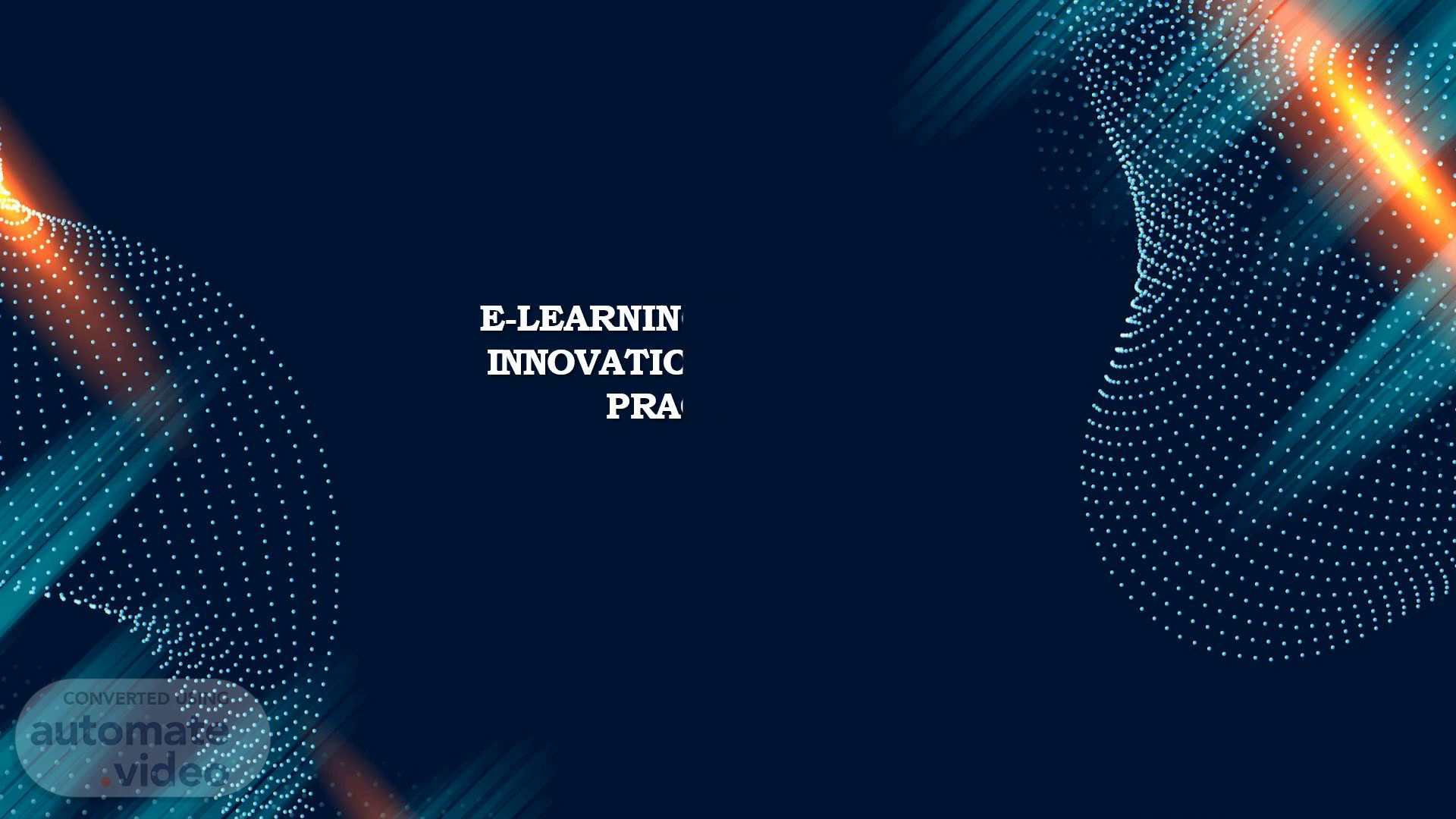Scene 1 (0s)
E-Learning Platforms: Innovations and Best Practices.
Scene 2 (7s)
Introduction to E-Learning. E-Learning platforms have revolutionized the way education is delivered. This presentation explores various innovations and best practices that enhance learning experiences and outcomes. We will discuss how technology can bridge gaps in traditional education and provide opportunities for all learners..
Scene 3 (22s)
The Rise of E- Learning. E-Learning has seen exponential growth due to advancements in technology and the need for flexible learning options. This slide highlights the factors contributing to its popularity, including accessibility, affordability, and the ability to cater to diverse learning styles..
Scene 4 (38s)
Innovative E-Learning Tools. Various tools such as Learning Management Systems (LMS), virtual classrooms, and interactive simulations are at the forefront of e-learning innovations. These tools enhance engagement and facilitate a more personalized learning experience for students..
Scene 5 (52s)
Gamification in Learning. Gamification incorporates game-like elements into educational content, making learning more engaging. This approach can significantly boost motivation and retention among students, leading to better educational outcomes..
Scene 6 (1m 5s)
Mobile Learning Advantages. Mobile learning allows students to access educational content anytime, anywhere. This flexibility supports self-paced learning and helps accommodate various schedules, making education more accessible to a broader audience..
Scene 7 (1m 18s)
Personalized Learning Experiences. E-learning platforms often utilize data analytics to create personalized learning paths. By assessing individual performance, these platforms can tailor content to meet each learner's unique needs and preferences, enhancing overall effectiveness..
Scene 8 (1m 31s)
Collaborative Learning Opportunities. Collaboration is key in e-learning environments. Platforms that facilitate group projects, discussions, and peer feedback help students develop critical social skills while learning from each other in a virtual setting..
Scene 9 (1m 45s)
Best Practices for Educators. Educators should adopt best practices for effective e-learning, such as setting clear objectives, providing timely feedback, and encouraging student interaction. These strategies contribute to a more engaging and productive online learning environment..
Scene 10 (1m 59s)
Challenges and Solutions. While e-learning offers numerous benefits, challenges such as digital divide, distractions, and engagement persist. Identifying these challenges and implementing effective solutions is critical to maximizing the potential of e-learning platforms..
Scene 11 (2m 13s)
[image]. Conclusion: Future of E-Learning. The future of e-learning is promising, with.
Scene 12 (2m 26s)
Do you have any question?.
Scene 13 (2m 32s)
Thaks you!.
